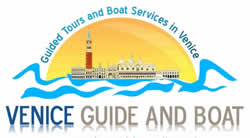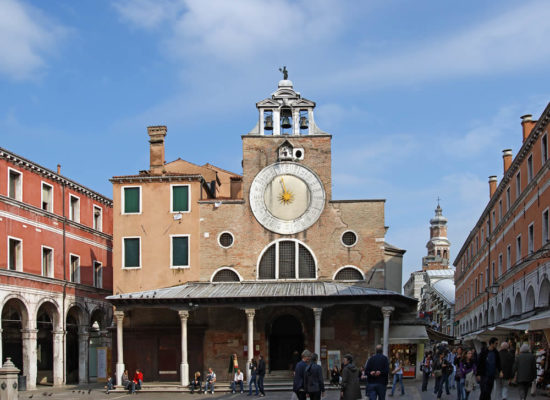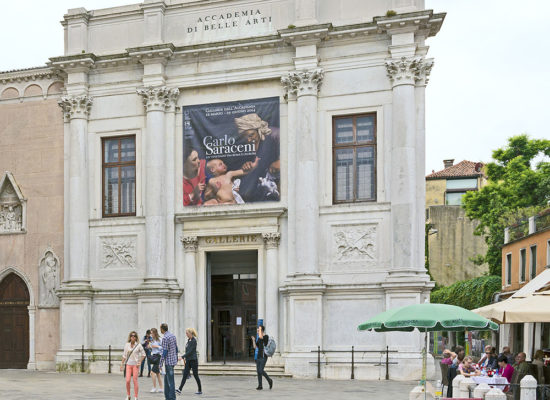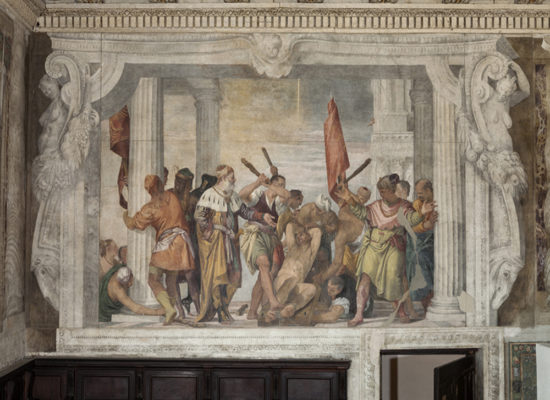Venice Art & History
Venice Art & History: a journey through colours and light!
If you are interested in art, history and local culture choose our Venice Art & History tours.
Venice is one of the cities with the greatest concentrations of artistic treasures in the world, masterpieces located in each and every corner. Add it to that the fact that the city itself is a work of art, and you will understand why even Venetians continue to discover artworks never noticed before.
The history of Venice reveals the reasons behind the wealth in art. Venice was for centuries one of the richest cities in Europe, the commercial crossroads between the East and the West. It was inhabited and ruled by wealthy merchants who for centuries were the main buyers of works of art, with which they enriched their homes, public buildings as well as the churches in the city. Venetian artists and artisans were among the best in Europe.
Discover the places where the great commercial emporium of Venice was located, surrounded by the institutional buildings responsible for the management and control of commercial activities, as well as the churches where merchants prayed for fruitful and honest business.
Many of the masterpieces of our city are still in the places for which they were originally painted. Visit the palace of one of the wealthiest Venetian families to admire the beautiful decoration created by the most famous artists of the Baroque period.
By visiting the Gallerie dell’Accademia you will follow the evolution of Venetian painting from 1300 to 1700. You can also choose to focus on the great painters of the 16th century, such as Titian, Tintoretto, Veronese, and of the 18th century as Tiepolo or Canaletto. If you like modern art instead, don’t miss the tour to the Peggy Guggenheim Collection.
And by looking at the particular architecture of the city you will be able to deepen the various architectural styles, from Byzantine, Gothic and Renaissance, with particular attention to the works of Palladio and Baroque.
Showing all 6 results
-

Venice and Palladio
From 230,00 € Book NowThe three main sources of Andrea Palladio‘s style were the architectural theorist of the 1st century B.C. Vitruvius, the classical building of Rome, and mathematics which governed proportions. How were this principles applied to Venice?
First available date: 28 04 2024 -

Business and Faith in Rialto
From 200,00 € Book NowBusiness and Faith in Rialto guided tour will take you through the Rialto Market stalls, where colours are reflecting the change of the seasons, exploring the heart of Venice’s commercial and trading center, discovering hidden art masterpieces and…tasting Venetian tapas!
First available date: 28 04 2024 -

The Guggenheim Collection
From 200,00 € Book NowThe American art collector Peggy Guggenheim moved into the 18th Century Palazzo Venier dei Leoni in 1949, and she filled it with her art treasures, consisting of a good number of the most representative examples of the major European and American modern art movements of the 19th century.
First available date: 28 04 2024 -

Venetian Painting
From 190,00 € Book NowThe Accademia Galleries is the definitive treasure house of Venetian painting. The museum displays the most significant collection of Venice art worldwide: a fascinating overview of more than 500 years of Venetian masterpieces characterized by colour and light.
First available date: 28 04 2024 -

Venice Masters of Colour
From 190,00 € Book NowVenice Masters of Colour guided tour will take you to the church of San Sebastiano, the best place to admire the great artistic skill of Paolo Veronese, and to the Scuola Grande dei Carmini, richly decorated with masterpieces by Giambattista Tiepolo, the best scene painter of the 18th century in Venice.
First available date: 28 04 2024 -

A Venetian Palace
From 190,00 € Book NowA Venetian Palace private guided tour includes the visit to Ca' Rezzonico, one of the most impressive palaces on the Grand Canal, a testimony of the folie de grandeur of the noble Venetian families of the past. An opportunity to experience the authentic atmosphere of a great 1700 private residence.
First available date: 28 04 2024







